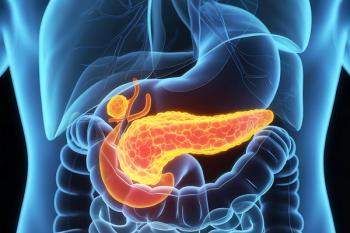
- LCGC Europe-11-01-2006
- Volume 19
- Issue 11
Paper with a difference!
Researchers from the University of Arkansas have come up with a fibrous nanomaterial suitable for fabricating robust paper-like material and devices. Potential applications for these nanowire assemblies include armour, flame-retardant fabric, bacteria filters, oil cracking, controlled drug release, decomposition of pollutants and chemical warfare agents.
Researchers from the University of Arkansas have come up with a fibrous nanomaterial suitable for fabricating robust paper-like material and devices. Potential applications for these nanowire assemblies include armour, flame-retardant fabric, bacteria filters, oil cracking, controlled drug release, decomposition of pollutants and chemical warfare agents.
This two-dimensional "paper" can be shaped into three-dimensional devices. It can be folded, bent and cut, or used as a filter, yet it is chemically inert, remains robust and can be heated up to 700 °C.
"Humans have used paper made from natural fibres for thousands of years," said Z. Ryan Tian, assistant professor of chemistry and biochemistry in the J. William Fulbright College of Arts and Sciences. "With this technology, we are entering a new era."
A hydrothermal heating process was used by Tian and his team to create long nanowires out of titanium dioxide and, from there, free-standing membranes. The resulting material is white in colour and resembles regular paper. Furthermore, the material can be cast into different three-dimensional shapes with different functions. The researchers have used the process to create tubes, bowls and cups, which can be manipulated by hand and trimmed with scissors.
For more information, e-mail:
Roll-up laptop screens
Scientists at the University of Cambridge, UK have developed a range of unique, shape-changing structures, which can be used in a variety of formats. Such uses include laptop screens, re-usable packaging, roll-up keyboards and self-erecting, temporary habitats.
These "morphing" structures afford multiple configurations without the need of complex parts or sophisticated manufacturing. Dr Keith Seffen, from the Department of Engineering, has developed the structures and is currently exploring various applications for their ingenious behaviour with co-worker Dr Simon Guest and graduate student Alex Norman.
Dr Seffen said, "They offer substantial shape-changing capabilities whilst preserving structural integrity. They are simply made and their operation does not rely upon advanced materials. They afford compact, inexpensive solutions for multifunctional devices, which are required to be lightweight, stiff but foldable on demand."
By using an ordinary sheet of metal, Dr Seffen can produce structures with no moving parts but which can be configured between at least two distinct, self-locking and stable forms. For example, an A5-sized flat screen can be snapped into the shape of a tube for compact carriage in a briefcase or pocket.
The operation does not require hinges, latches or locks, and without these extra parts, production times and costs are said to be reduced compared with traditional folding structures.
For more information, e-mail:
Articles in this issue
Newsletter
Join the global community of analytical scientists who trust LCGC for insights on the latest techniques, trends, and expert solutions in chromatography.





